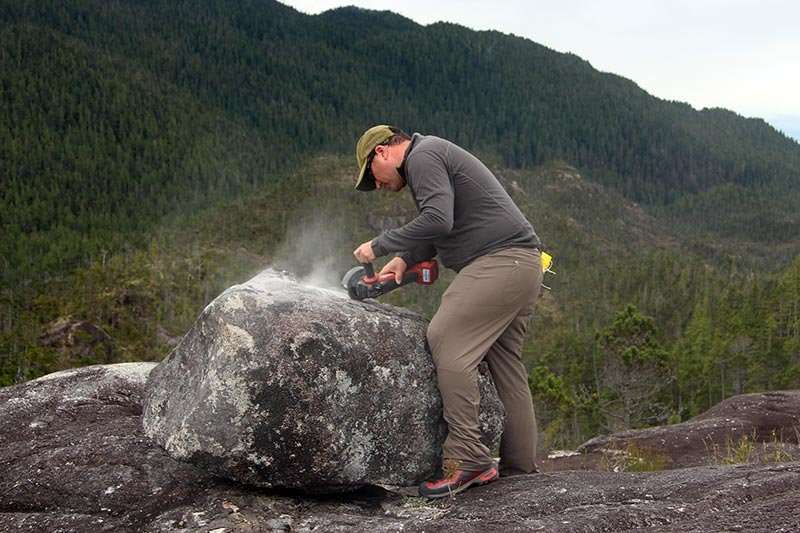Ice age discovery may reveal early migration route of first Americans

A group of researchers have discovered the retreat of an ancient ice sheet from the western coast of Canada occurred earlier than previously thought.
Dr. Christopher Darvill from The University of Manchester's Department of Geography is the lead author on a new paper published in Geophysical Research Letters.
Darvill and his co-authors studied the Cordilleran Ice Sheet in North America—which once covered an area the size of the Greenland Ice Sheet—to improve our understanding of past climate and ancient human migration.
The retreat of the ice sheet controlled when routes were opened that allowed ancient people to migrate south into the Americas. Which route was used – and when – remains a highly contentious topic amongst archaeologists and geologists.
Darvill and colleagues from universities in Canada and the USA used a helicopter to reach remote island locations along the Canadian coast. The team chipped rock samples from the tops of boulders and bedrock, before taking them back to a lab to investigate further.
"We used a technique called 'surface exposure dating', where we measured the concentration of a rare isotope of beryllium in rocks exposed by the retreating ice," said Darvill.
"The isotope accumulates in certain rocks over time as they are bombarded by high-energy particles – cosmic rays – from outer space. Measuring the isotope tells you how much time has passed since the rock was exposed by retreating ice."
They found sites close to the present coastline were exposed at least 17,700 years ago, suggesting islands along the coastline were ice-free at this time. Some higher locations were exposed even earlier. This is important, because it suggests an early route along the coastline of Canada might have been viable well before an alternative, inland route.
The findings should help archaeologists target investigations tracing the migration pathways of early people into the Americas.
"Our work changes the model of when this ice sheet retreated in the past, improving our understanding of past climate change over western North America," said Darvill. "The new findings add an exciting piece to the puzzle surrounding the colonisation of the continent."
More information: C. M. Darvill et al. Retreat of the western Cordilleran Ice Sheet margin during the last deglaciation, Geophysical Research Letters (2018). DOI: 10.1029/2018GL079419
Journal information: Geophysical Research Letters
Provided by University of Manchester




















